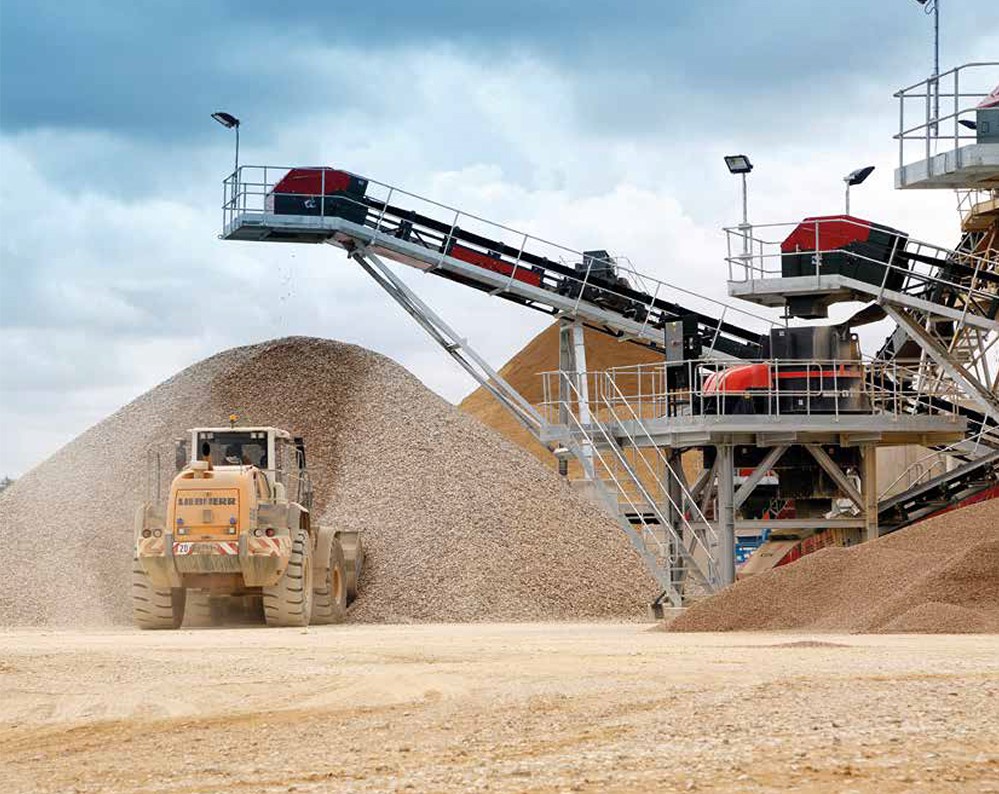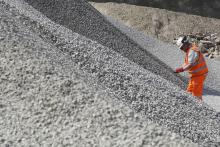
That is one of the major findings in the MPA's newly-published 8th Annual Mineral Planning Survey (AMPS 2019), which covers the period to the end of 2018.
The association says the continued decline in aggregate reserves is a stark reminder that the future “steady and adequate” supply of these essential construction minerals cannot be assumed.
The survey has been produced against the backdrop of a slight increase in aggregates demand during 2018, and is based upon data for the whole of Great Britain provided in confidence by MPA members.
Demand for land-won sand and gravel continues to outstrip the amount of new reserves being permitted, with the 10-year average replenishment rate at 63%, an increase from the equivalent figure in 2017 (53%). The MPA says this reflects the fact that newly consented sand and gravel reserves represented 92% of annual sales during 2018. In the case of crushed rock, the 10-year average replenishment rate stands at 75%, with new reserves permitted in 2018 representing 84% of annual sales.
The AMPS data, which shows the interface between mineral operators and the land use planning system, is derived from original MPA data together with information from the annual Aggregate Working Party reports. This work is then compiled in the form of the MPA Annual Mineral Planning Survey (AMPS) reports.
Among other key findings of the survey, total sales of land-won sand and gravel increased by 2.9% in 2018 while sales of crushed rock increased by 2.2%.
While 92% of annual sales were replenished through new permissions in 2018, the rolling 10-year average is 63%, indicating that sales continue to outstrip the amount of new reserves permitted.
The 10-year average for the replenishment of crushed rock reserves was 75% in 2018. In 2018 84% of annual sales were replaced by newly permitted crushed rock reserves.
There has been a slight decrease in submissions for sand and gravel in 2018 (16 sites) compared to 2017 (18 sites), the majority being for extensions at existing operations. The number of crushed rock applications also decreased (3 compared to 5 in 2017). A further 18 applications (21 in 2017) were made for time extensions, S73 applications and similar matters to maintain existing operations.
A total of 16 applications were approved for sand and gravel extraction in 2018 (13 in 2017) with no refusals, and 1 application was withdrawn. For crushed rock, 5 applications were approved in 2018 (up from 2 in 2017) with no refusals.
Over 2006-18, it took on average 30 and 27 months respectively to secure permission for new sand and gravel and crushed rock reserves.
Over the past 10 years, 43% of all new permissions issued were for sites that had not been allocated in a mineral plan.
MPA executive director of planning and mineral resources, Mark Russell said: “Mineral products represent the largest material flow in the UK economy, with the vast majority of supply used in UK construction improving our housing, schools and hospitals alongside the transport, energy and water infrastructure on which society at large is so reliant.
"Construction, including high-profile infrastructure projects such as HS2, represents a key element of Government’s Industrial Strategy aiming to boost productivity and secure sustainable future economic growth particularly in the regions."
The MPA says the necessary level of aggregates supply requires effective planning, management and monitoring and there is a continued clear desire from both local authorities and from industry for the National and Sub-national Guidelines for aggregates provision to be updated to support the Managed Aggregate Supply System (MASS).
The MPA’s future demand scenarios indicate that a cumulative total of between 3.2 to 3.8 billion tonnes of construction aggregates are likely to be required by 2030 to support economic growth and development across the country. To secure the most cost effective and sustainable supply of these materials will require active management, supported by data to monitor performance, in order to ensure the right resources are made available in the right place and at the right time.”







